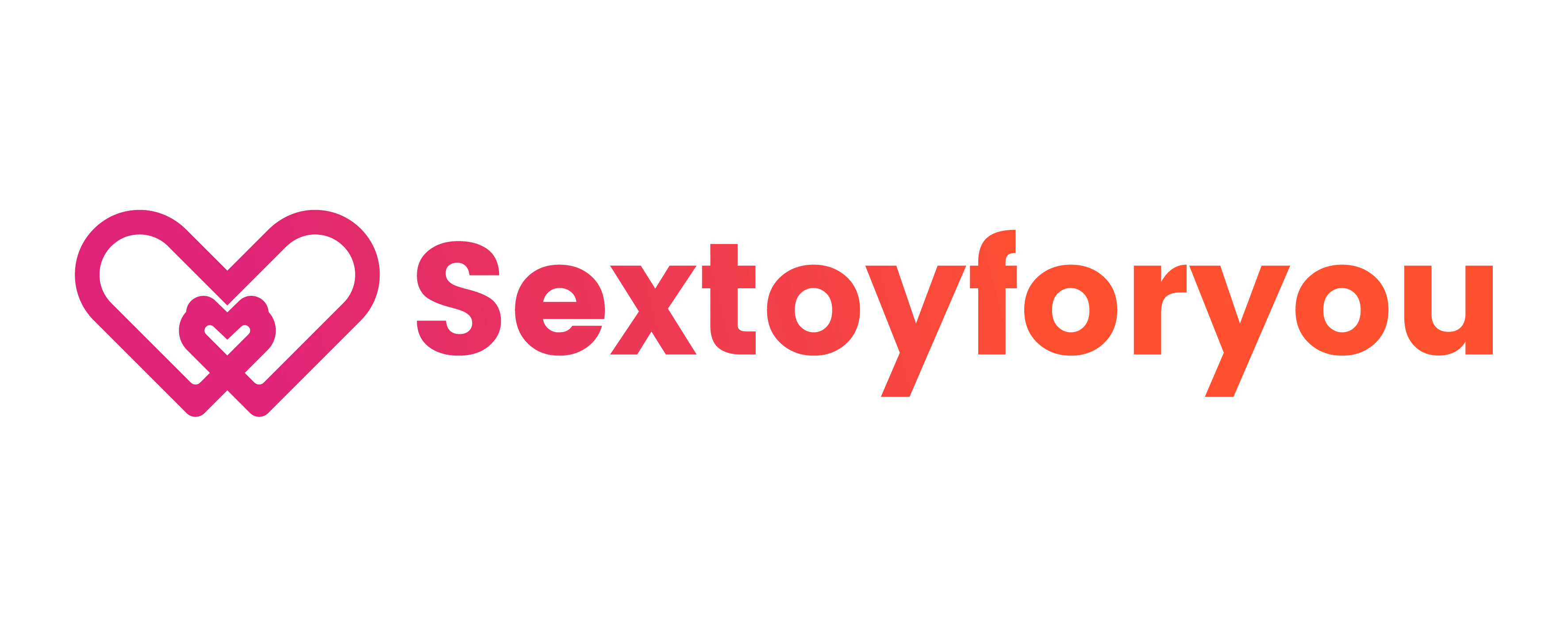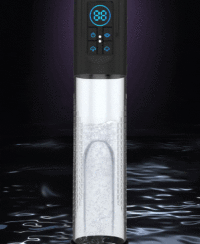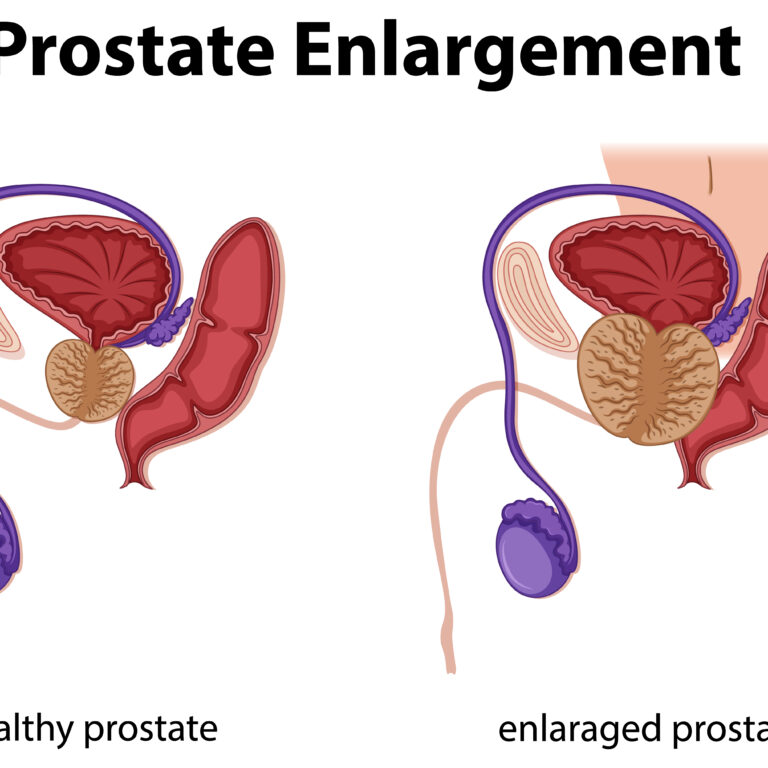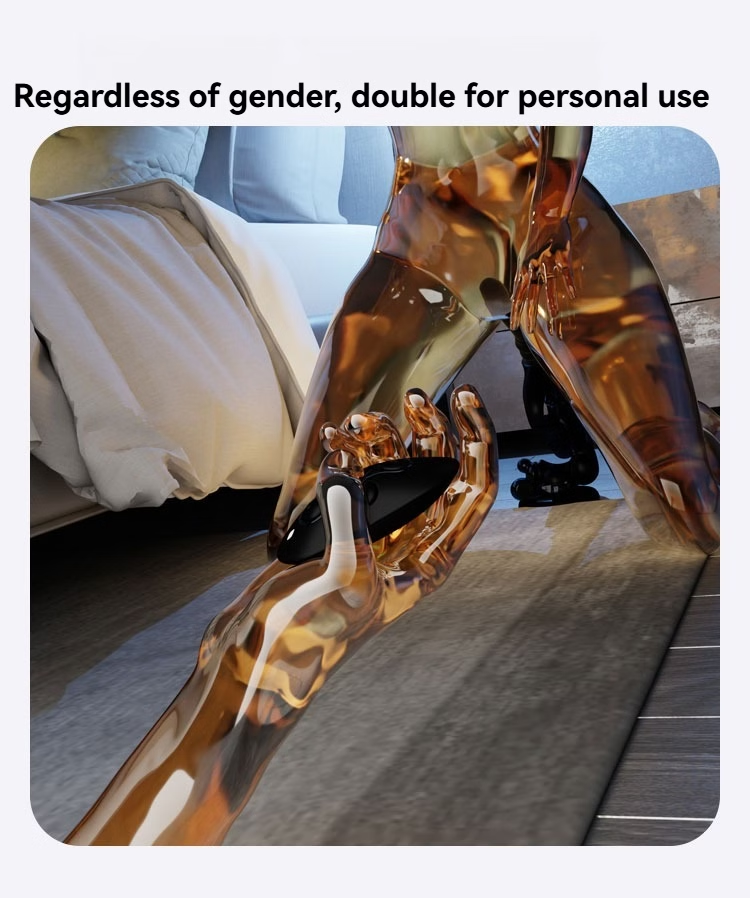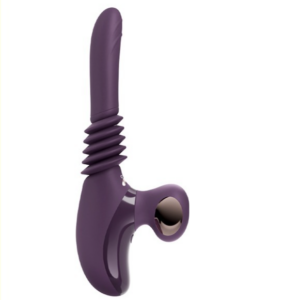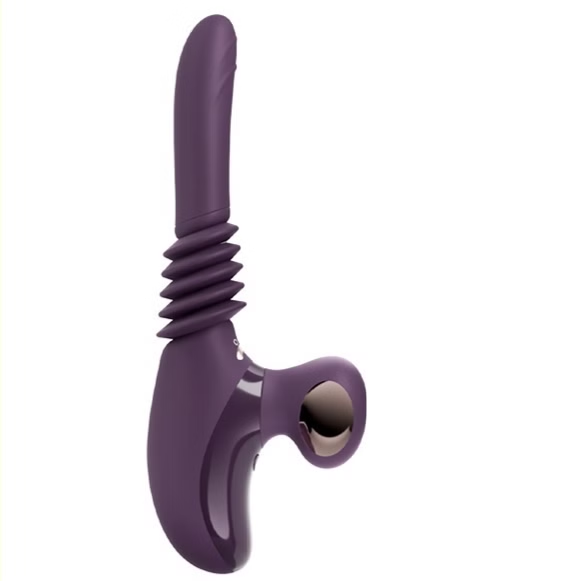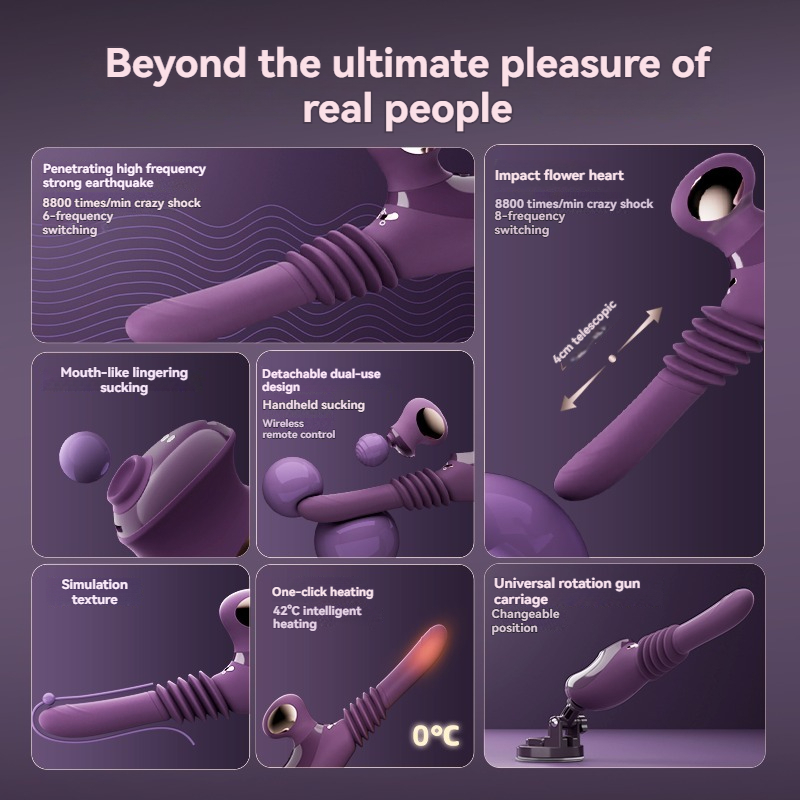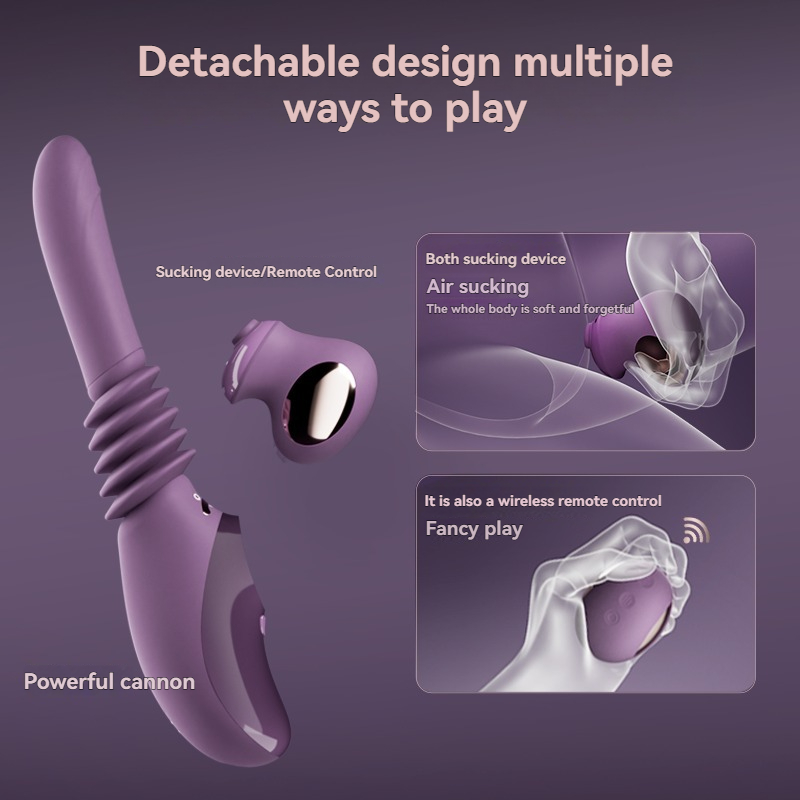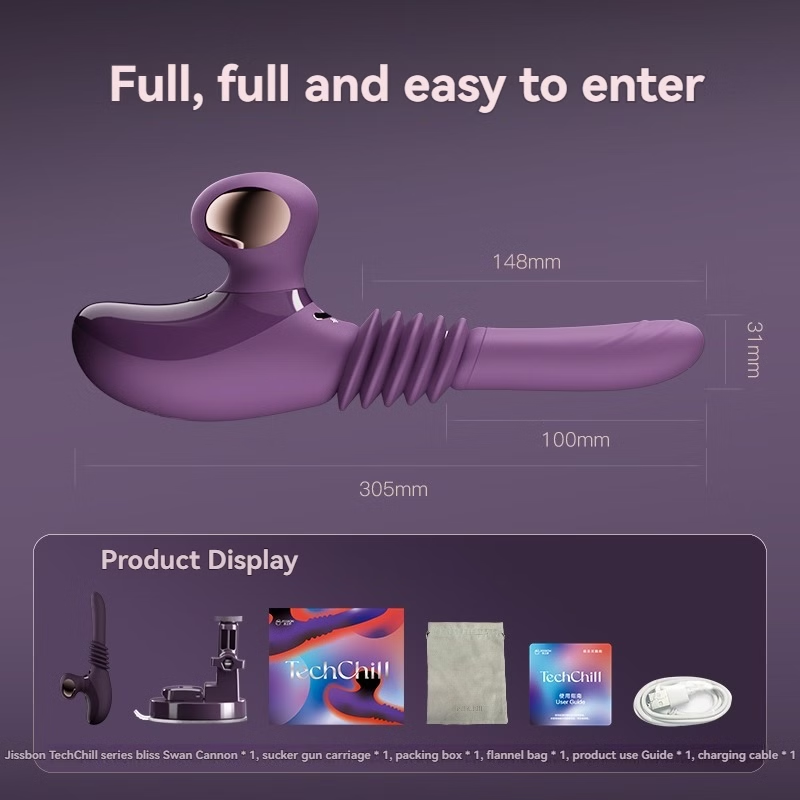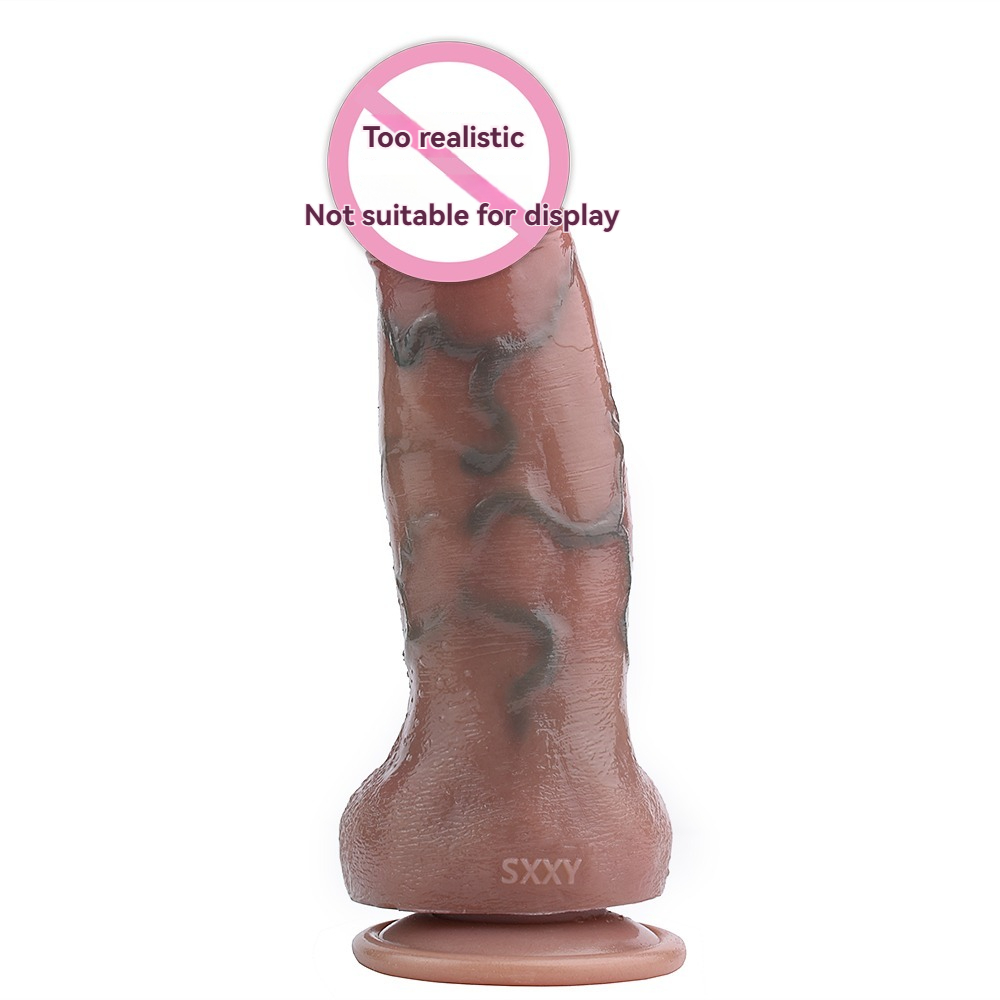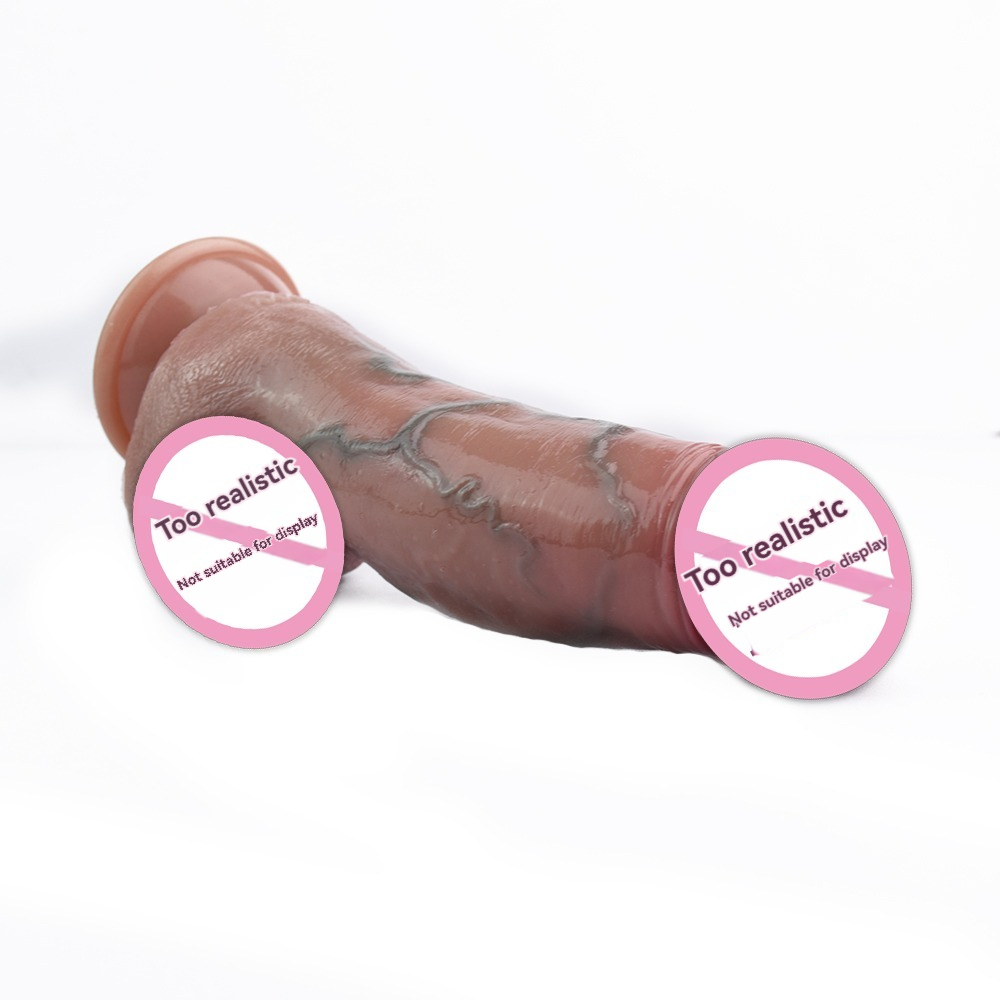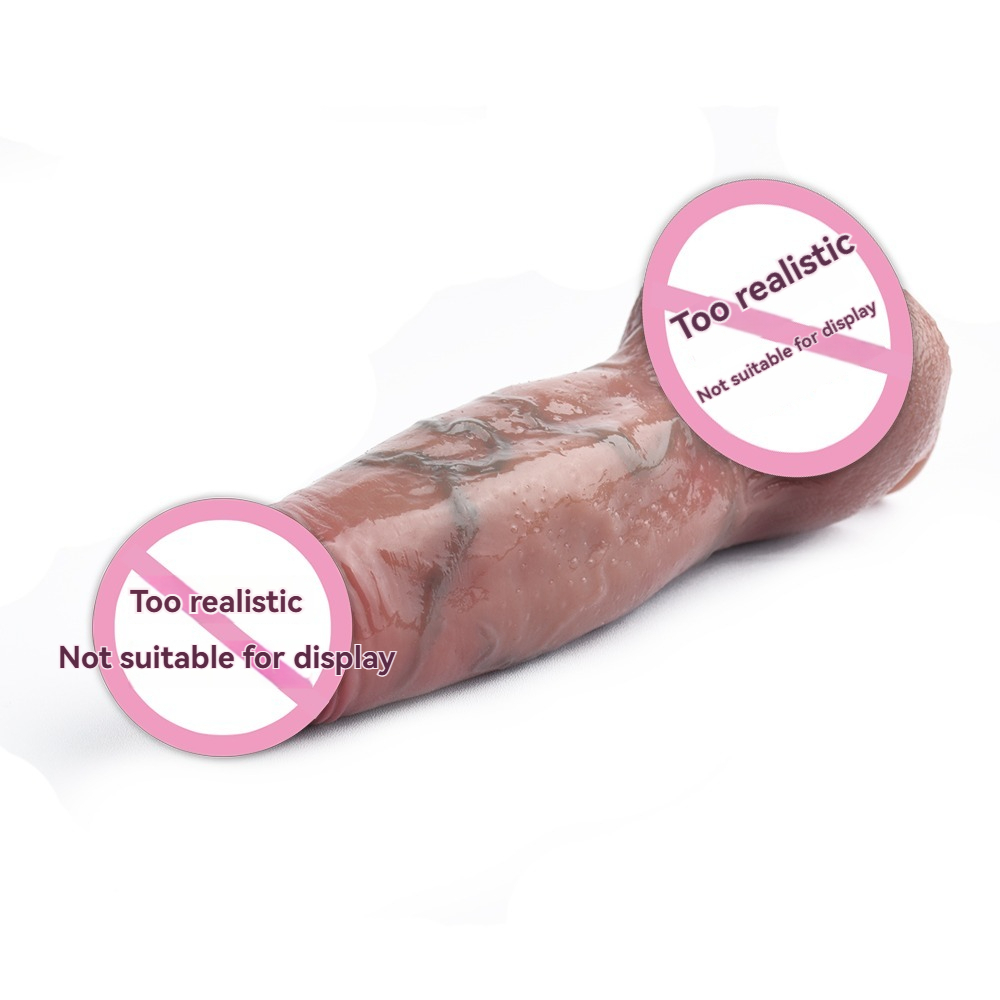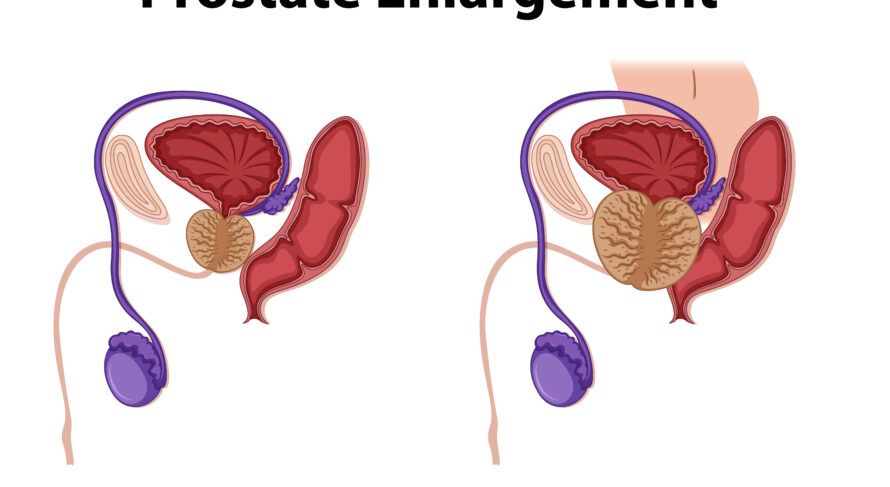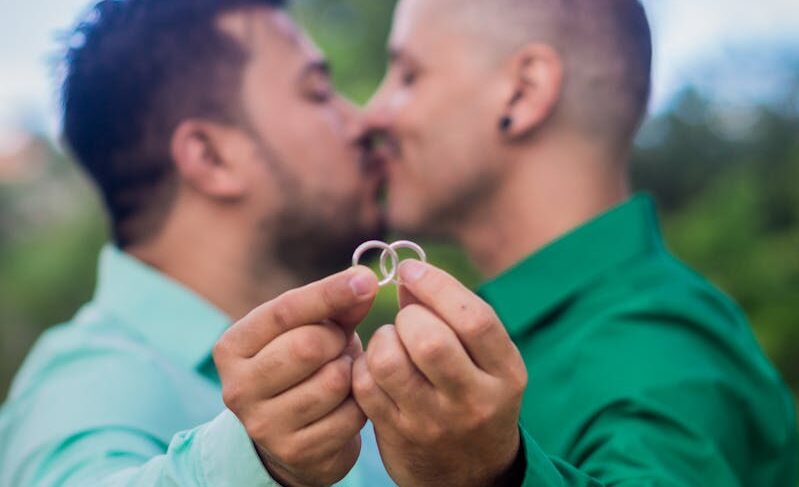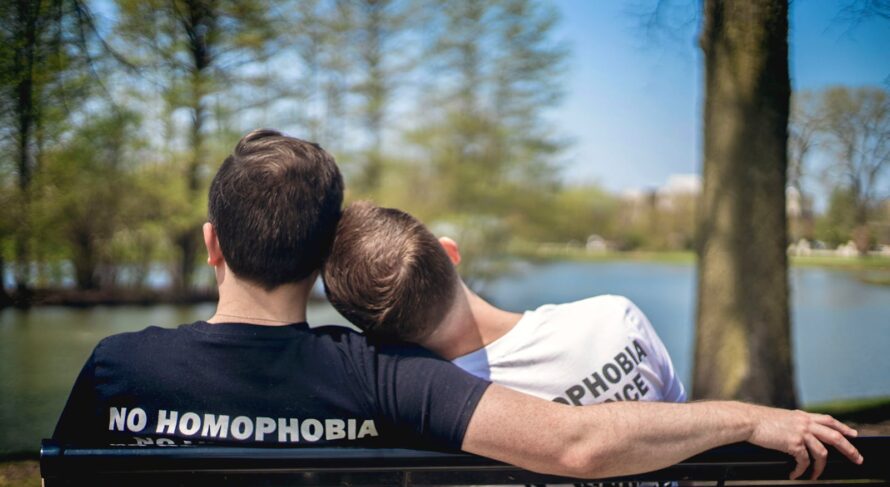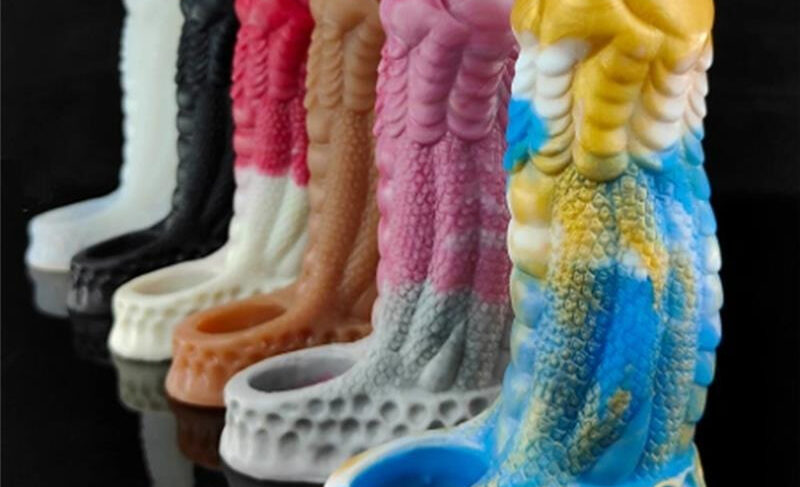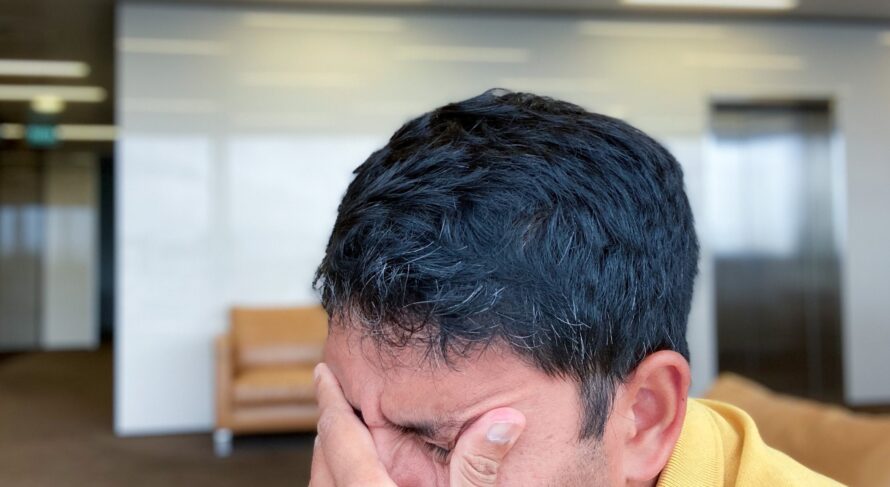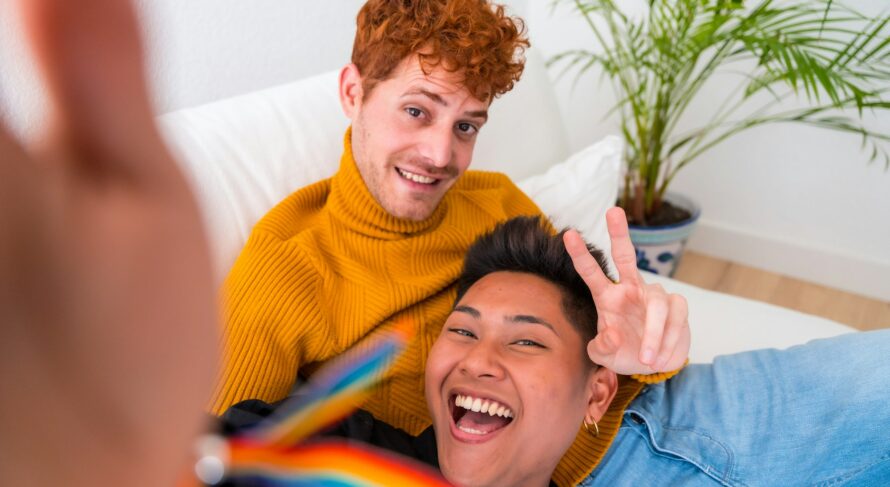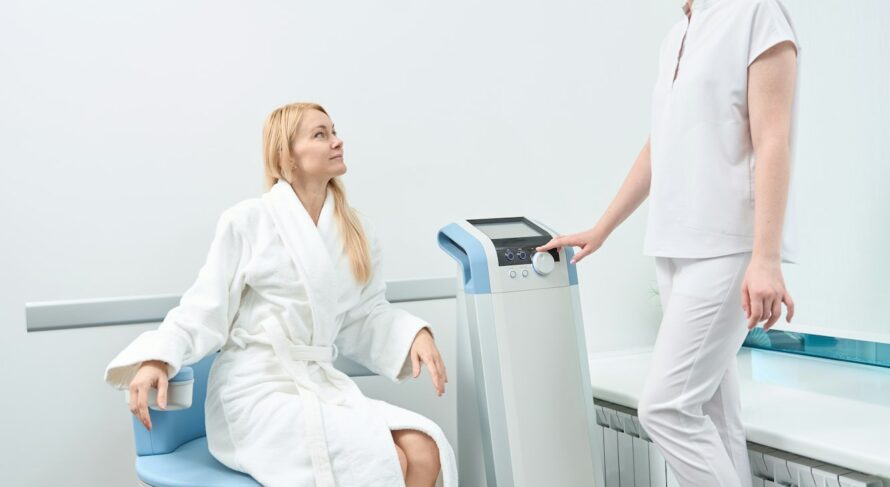Inclusive Sexual Education: Empowering All Orientations with Knowledge and Tools
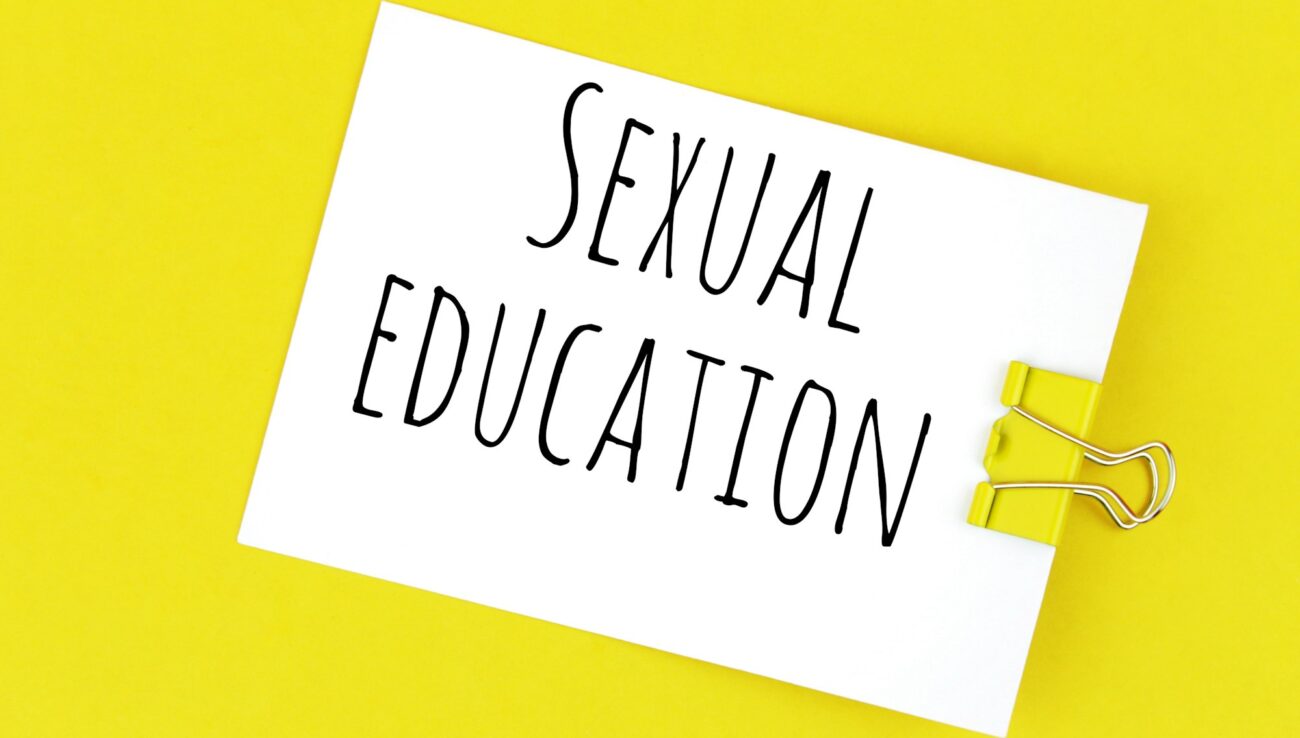
Key Takeaways
- Comprehensive Understanding: Inclusive sexual education addresses the diverse needs of all sexual orientations, promoting informed and respectful sexual behavior.
- Enhanced Mental Health: Inclusive education fosters acceptance and reduces stigma, contributing to improved mental health outcomes for LGBTQ+ individuals.
- Effective Prevention: Providing tailored information on safe sex practices and STI prevention ensures that all orientations are adequately protected.
- Empowered Individuals: Knowledge and tools empower individuals to make informed decisions about their sexual health and relationships.
- Supportive Environments: Creating inclusive educational settings promotes a culture of acceptance, support, and mutual respect.
Table of Contents
- Introduction
- Current State of Sexual Education
- Key Components of Inclusive Sexual Education
- Benefits of Inclusive Sexual Education
- Implementing Inclusive Practices in Sexual Education
- Role of Technology and Online Resources
- Tools and Resources to Support Inclusive Sexual Education
- Case Studies and Success Stories
- Visual Element: Components of Inclusive Sexual Education
- Comprehensive FAQ
- Conclusion
- References
Introduction
Sexual education plays a pivotal role in shaping individuals’ understanding of their bodies, relationships, and sexual health. However, traditional sexual education curricula often adopt a heteronormative perspective, failing to address the diverse sexual orientations and gender identities present in today’s society. Inclusive sexual education aims to bridge this gap by providing comprehensive, accurate, and affirming information that caters to all individuals, regardless of their sexual orientation or gender identity.
At sextoyforyou.store, we recognize the critical importance of inclusive sexual education in promoting sexual wellness and fostering a culture of acceptance and respect. This comprehensive guide explores the significance of inclusive sexual education, its key components, benefits, implementation strategies, and the role of technology and resources in supporting this essential aspect of personal and community health.
Whether you are an educator, parent, or individual seeking to enhance your understanding, this guide offers in-depth insights and practical tools to empower all orientations with the knowledge and resources necessary for a fulfilling and healthy sexual life.

Current State of Sexual Education
Overview of Standard Sexual Education Curricula
Traditional sexual education programs have historically focused primarily on heterosexual relationships, emphasizing topics like reproductive anatomy, contraception, and STI prevention. While these programs provide essential information, they often neglect to address the experiences and needs of LGBTQ+ individuals, thereby creating an incomplete and sometimes exclusionary educational experience.
Standard curricula typically include:
- Reproductive Health: Detailed explanations of male and female reproductive systems, menstrual cycles, and conception processes.
- Contraception: Information on various contraceptive methods, their effectiveness, and usage guidelines.
- STI Prevention: Education on sexually transmitted infections, their transmission, symptoms, and prevention strategies.
- Abstinence: Promotion of abstinence as the only foolproof method of preventing STIs and unwanted pregnancies.
While these topics are crucial, the lack of inclusivity can leave LGBTQ+ students feeling marginalized and uninformed about safe sex practices relevant to their own relationships and orientations.
Gaps in Addressing Diverse Sexual Orientations
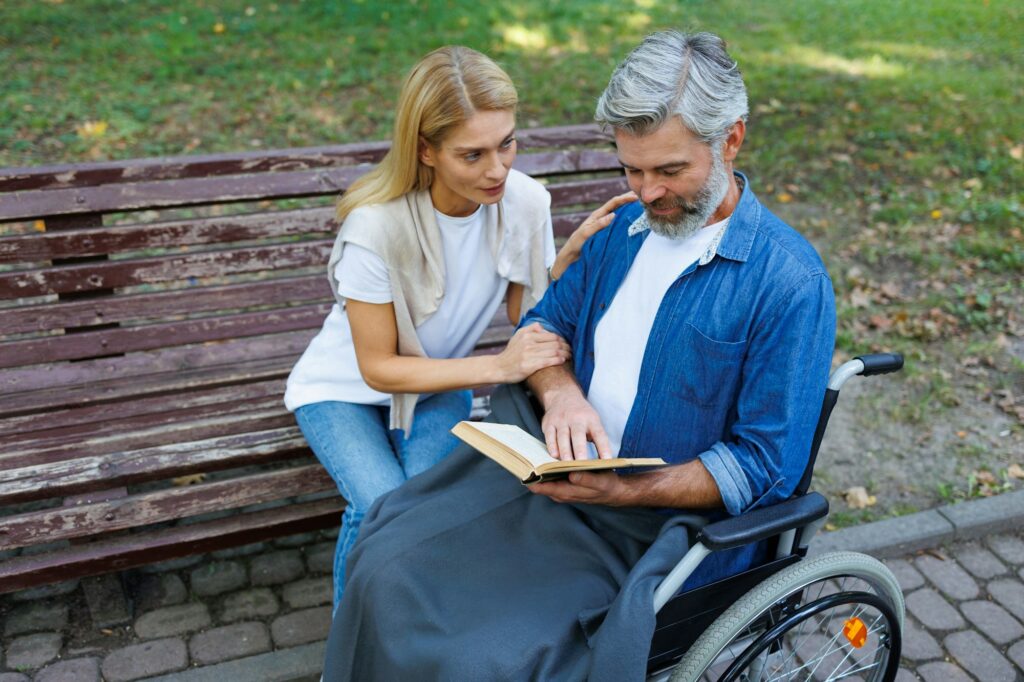
The primary gaps in standard sexual education include:
- Lack of Representation: Minimal or no representation of LGBTQ+ relationships and sexual practices, leading to feelings of invisibility among LGBTQ+ students.
- Limited Information on Safe Sex Practices for Non-Heteronormative Orientations: Insufficient coverage of safe sex methods tailored to various sexual orientations, such as anal sex safety for gay men or non-penetrative practices for lesbian women.
- Absence of Gender Identity Topics: Failure to address topics related to gender identity, gender expression, and the intersectionality of sexual orientation and gender.
- Inadequate Coverage of Consent and Boundaries: Limited discussion on the nuances of consent, power dynamics, and setting boundaries within diverse relationships.
These gaps contribute to a lack of comprehensive sexual education that adequately prepares all students for healthy and safe sexual experiences.
Consequences of Non-Inclusive Education
The absence of inclusive sexual education has significant repercussions:
- Increased Risk of STIs and Unintended Pregnancies: Without appropriate information, LGBTQ+ individuals may not be fully aware of the risks associated with their sexual practices, leading to higher rates of STIs and unintended pregnancies.
- Mental Health Challenges: Feeling invisible or misunderstood in educational settings can contribute to lower self-esteem, increased anxiety, and higher rates of depression among LGBTQ+ youth (Russell et al., 2011).
- Engagement in Risky Behaviors: Lack of proper education can result in engagement in unsafe sexual practices due to misinformation or lack of awareness, increasing the likelihood of adverse health outcomes.
- Reinforcement of Stigma and Discrimination: Non-inclusive education perpetuates societal stigmas and discrimination, fostering environments where LGBTQ+ individuals may feel unsafe or unsupported.
Addressing these consequences necessitates a shift towards inclusive sexual education that recognizes and validates the diversity of sexual orientations and gender identities.
Key Components of Inclusive Sexual Education
Comprehensive Coverage of All Sexual Orientations

Inclusive sexual education ensures that all sexual orientations are acknowledged and addressed. This involves:
- Acknowledgment of Diverse Orientations: Recognizing and naming various sexual orientations such as heterosexuality, homosexuality, bisexuality, pansexuality, and asexuality.
- Representation in Curriculum Materials: Including images, stories, and examples that reflect diverse relationships and sexual practices.
- Safe Sex Practices for All Orientations: Providing tailored information on safe sex methods relevant to different orientations, ensuring that all students are equipped with the knowledge to protect themselves.
By covering all sexual orientations comprehensively, education becomes more relatable and relevant to every student, fostering an environment of acceptance and understanding.
Representation and Visibility of LGBTQ+ Individuals
Visibility is a cornerstone of inclusive education. Effective representation includes:
- Diverse Curriculum Content: Incorporating case studies, scenarios, and narratives that feature LGBTQ+ individuals and relationships.
- Guest Speakers and Educators: Inviting LGBTQ+ educators and speakers to share their experiences and knowledge, providing firsthand insights.
- Inclusive Language: Using language that respects and affirms diverse gender identities and sexual orientations, avoiding assumptions based on heteronormativity.
Representation ensures that LGBTQ+ students see themselves reflected in their education, promoting a sense of belonging and validation.
Addressing Consent, Boundaries, and Healthy Relationships

Understanding consent and boundaries is essential for all individuals, regardless of sexual orientation. Inclusive sexual education covers:
- Definition of Consent: Clear explanations of what constitutes consent, emphasizing that it must be informed, voluntary, and revocable at any time.
- Power Dynamics: Exploring how power imbalances can affect consent and how to navigate these situations respectfully.
- Setting and Respecting Boundaries: Teaching students how to establish and communicate personal boundaries and the importance of respecting others’ boundaries.
- Healthy Relationship Dynamics: Promoting healthy communication, mutual respect, and emotional support within relationships.
These topics are crucial for fostering respectful and consensual interactions, thereby enhancing overall relationship health and safety.
Benefits of Inclusive Sexual Education
Improved Sexual Health Outcomes

Inclusive sexual education directly contributes to better sexual health outcomes by:
- Enhanced Knowledge: Providing accurate and comprehensive information about safe sex practices, STI prevention, and reproductive health tailored to diverse orientations.
- Increased Use of Protection: Educated individuals are more likely to use condoms, dental dams, and other protective measures, reducing the risk of STIs and unintended pregnancies.
- Early Detection and Treatment: Awareness of STI symptoms and the importance of regular testing leads to early detection and timely treatment, preventing long-term health complications.
Studies have shown that comprehensive and inclusive sexual education programs are associated with lower rates of STIs and unintended pregnancies among LGBTQ+ populations (Trussell, 2011).
Reduced Stigma and Discrimination
Inclusive education plays a vital role in reducing societal stigma and discrimination by:
- Promoting Acceptance: Educating all students about diverse sexual orientations fosters a culture of acceptance and respect.
- Challenging Stereotypes: Breaking down misconceptions and stereotypes about LGBTQ+ individuals helps in reducing prejudice and bias.
- Encouraging Empathy: Exposure to diverse perspectives and experiences cultivates empathy and understanding among students, leading to more supportive interactions.
By challenging societal norms and promoting inclusivity, education helps create safer and more accepting environments for everyone.
Enhanced Self-Esteem and Identity Affirmation
Inclusive sexual education supports the psychological well-being of LGBTQ+ individuals by:
- Affirming Identities: Validating students’ sexual orientations and gender identities promotes self-acceptance and confidence.
- Providing Support: Offering resources and support systems within the educational framework helps students navigate their identities with assurance.
- Boosting Self-Esteem: Positive reinforcement and recognition of diverse identities contribute to higher self-esteem and reduced feelings of isolation.
Higher self-esteem and affirmed identities are linked to better mental health outcomes, reducing the risk of depression, anxiety, and suicidal ideation among LGBTQ+ youth (Russell et al., 2011).
Implementing Inclusive Practices in Sexual Education
Curriculum Development and Teacher Training
Effective implementation of inclusive sexual education requires thoughtful curriculum development and comprehensive teacher training:
- Developing Inclusive Curriculum: Collaborate with LGBTQ+ experts and community members to create curriculum content that accurately represents diverse orientations and experiences. Ensure that the curriculum includes topics like sexual orientation, gender identity, consent, safe sex practices, and healthy relationships for all orientations.
- Teacher Training Programs: Provide ongoing professional development for educators to equip them with the knowledge and skills needed to deliver inclusive sexual education. Training should cover cultural competency, sensitivity to diverse identities, and strategies for addressing questions and concerns from students.
- Resource Allocation: Allocate sufficient resources to support inclusive education, including access to up-to-date educational materials, guest speakers, and technological tools that facilitate interactive learning.
By prioritizing curriculum development and teacher training, schools can ensure that sexual education is both comprehensive and respectful of all students’ identities.
Incorporating Diverse Voices and Experiences
Incorporating diverse voices and experiences enriches sexual education by providing multiple perspectives:
- Guest Speakers: Invite LGBTQ+ individuals, activists, and educators to share their personal experiences and insights, fostering a deeper understanding among students.
- Student Involvement: Encourage students to share their experiences and questions in a safe and supportive environment, promoting peer learning and mutual respect.
- Diverse Case Studies: Use case studies and scenarios that reflect a variety of relationships and sexual orientations, helping students relate to and learn from different experiences.
Incorporating diverse voices ensures that all students feel seen and heard, enhancing the relatability and effectiveness of the education provided.
Utilizing Interactive and Engaging Teaching Methods
Engaging teaching methods enhance the learning experience and promote better retention of information:
- Group Discussions and Debates: Facilitate open discussions and debates on topics related to sexual orientation, consent, and safe sex practices, encouraging critical thinking and respectful dialogue.
- Role-Playing Activities: Use role-playing to simulate real-life scenarios involving consent, boundary setting, and communication, helping students practice and internalize these skills.
- Multimedia Resources: Incorporate videos, podcasts, and interactive online modules that cater to different learning styles, making the education process more dynamic and engaging.
- Hands-On Demonstrations: Provide practical demonstrations on the correct use of condoms, dental dams, and other protective measures, ensuring that students feel confident in their ability to implement safe sex practices.
By utilizing interactive and engaging teaching methods, educators can create a more effective and enjoyable learning environment that fosters deeper understanding and application of sexual health concepts.
Role of Technology and Online Resources
E-Learning Platforms and Digital Tools
Technology plays a significant role in enhancing inclusive sexual education by providing accessible and flexible learning options:
- Online Courses and Modules: E-learning platforms offer comprehensive courses that cover diverse sexual orientations, safe sex practices, and healthy relationships, allowing students to learn at their own pace.
- Interactive Quizzes and Assessments: Digital tools like quizzes and assessments can reinforce learning by testing students’ knowledge and providing instant feedback, helping them identify areas for improvement.
- Virtual Classrooms: Virtual classrooms facilitate real-time interaction between educators and students, enabling discussions and collaborative learning regardless of geographical constraints.
E-learning platforms ensure that inclusive sexual education is accessible to all students, regardless of their location or learning preferences.
Access to Information Through Blogs and Websites
Blogs and websites serve as valuable resources for both educators and students, offering a wealth of information and support:
- Educational Blogs: Websites like sextoyforyou.store provide articles, guides, and resources that cover a wide range of topics related to sexual health, safe sex practices, and inclusive education. These platforms offer up-to-date information and practical advice that complement formal education.
- Resource Libraries: Comprehensive online libraries with articles, research papers, and multimedia content allow individuals to explore topics in-depth and at their own convenience.
- Supportive Communities: Online forums and communities offer spaces where individuals can ask questions, share experiences, and receive support from peers and experts, fostering a sense of belonging and mutual assistance.
Access to reliable information through blogs and websites empowers individuals to take control of their sexual health and education, providing continuous learning opportunities beyond the classroom.
Leveraging Social Media for Education and Awareness
Social media platforms are powerful tools for promoting inclusive sexual education and raising awareness about sexual health issues:
- Awareness Campaigns: Social media can amplify messages about safe sex practices, consent, and the importance of inclusivity, reaching a wide and diverse audience quickly.
- Engaging Content: Short videos, infographics, and interactive posts can convey complex information in an easily digestible format, increasing engagement and retention among users.
- Influencer Partnerships: Collaborating with influencers who advocate for LGBTQ+ rights and sexual health can enhance the credibility and reach of educational messages, making them more relatable and impactful.
By leveraging the widespread reach and interactive nature of social media, educators and organizations can effectively disseminate information and foster a culture of informed and respectful sexual behavior.
Tools and Resources to Support Inclusive Sexual Education
Educational Materials and Guides
Comprehensive and inclusive educational materials are essential for effective sexual education:
- Inclusive Curriculum Guides: Develop and distribute curriculum guides that encompass diverse sexual orientations, gender identities, and safe sex practices, ensuring that educators have the necessary resources to teach inclusively.
- Printable Resources: Provide students with printable guides, worksheets, and fact sheets that cover key topics such as consent, safe sex practices, and healthy relationships, allowing them to reference information as needed.
- Interactive Tools: Utilize interactive tools like online modules, videos, and simulations that engage students and enhance their understanding of complex concepts.
By offering a variety of educational materials and guides, schools can ensure that all students receive accurate and comprehensive sexual education that respects and affirms their identities.
Sex Toys as Educational Tools
Sex toys can serve as valuable educational tools, helping individuals explore their bodies and understand their sexual preferences:
- Anatomical Education: Sex toys designed to mimic or stimulate different body parts can aid in anatomical education, allowing individuals to gain a better understanding of their own bodies and responses.
- Communication Facilitation: Introducing sex toys in educational settings can encourage open discussions about desires, boundaries, and safe sex practices, promoting healthier and more communicative relationships.
- Safe Exploration: Sex toys provide a safe and private means for individuals to explore their sexuality without the risks associated with unprotected sexual activities.
At sextoyforyou.store, we offer a diverse range of sex toys that cater to different orientations and preferences, providing tools that enhance both sexual wellness and educational experiences. Our products are designed with safety, inclusivity, and pleasure in mind, ensuring that all individuals can explore and understand their sexuality in a healthy and informed manner.
Community Resources and Support Networks
Building strong community resources and support networks is crucial for sustaining inclusive sexual education:
- Support Groups: Establishing support groups for LGBTQ+ individuals provides a safe space for sharing experiences, seeking advice, and receiving emotional support, fostering a sense of community and belonging.
- Counseling Services: Accessible counseling services that are knowledgeable about diverse sexual orientations and gender identities can help individuals navigate their sexual health and personal relationships with confidence.
- Local Organizations: Partnering with local LGBTQ+ organizations and health centers can provide additional resources, training, and support for inclusive sexual education programs.
- Online Forums: Online forums and virtual communities offer platforms where individuals can connect, share information, and support each other in their sexual wellness journeys.
By strengthening community resources and support networks, individuals can access the help and information they need to maintain their sexual health and well-being, creating a more supportive and informed society.
Case Studies and Success Stories
Examples of Effective Inclusive Sexual Education Programs
Several schools and organizations have successfully implemented inclusive sexual education programs, demonstrating significant positive outcomes:
- School A: Comprehensive LGBTQ+ Curriculum Integration
School A integrated a comprehensive LGBTQ+ curriculum into their existing sexual education program. This included detailed lessons on various sexual orientations, gender identities, and safe sex practices tailored to different orientations. The school also invited LGBTQ+ guest speakers and provided training for teachers to handle sensitive topics with empathy and accuracy.
Outcomes:
- Increased awareness and understanding of diverse sexual orientations among all students.
- Reduction in bullying and discrimination incidents related to sexual orientation.
- Higher rates of condom use and STI testing among LGBTQ+ students.
- Organization B: Community-Based Inclusive Sexual Education Workshops
Organization B conducted community-based workshops focused on inclusive sexual education. These workshops were open to individuals of all ages and orientations, providing a safe and supportive environment for learning and discussion. The workshops covered topics such as consent, safe sex practices, and the use of protective measures tailored to different sexual orientations.
Outcomes:
- Enhanced community awareness and acceptance of diverse sexual orientations.
- Empowered individuals with the knowledge and tools to practice safe sex.
- Strengthened support networks within the community, fostering a culture of mutual respect and understanding.
These examples highlight the effectiveness of inclusive sexual education programs in promoting sexual health, reducing stigma, and fostering supportive environments for all individuals.
Testimonials from Individuals Benefiting from Inclusive Education
- Testimonial 1: Maria, High School Student
“Before our school adopted an inclusive sexual education program, I often felt invisible and misunderstood. The new curriculum included information about different sexual orientations and gender identities, which made me feel seen and supported. I now feel more confident in discussing my sexual health and relationships, and I appreciate the safe space our teachers provide for asking questions.”
- Testimonial 2: John, LGBTQ+ Youth Advocate
“Inclusive sexual education has been a game-changer for our community. It not only educates students about safe sex practices but also promotes acceptance and understanding. Many LGBTQ+ students have shared how the inclusive curriculum has positively impacted their mental health and sense of belonging within the school environment.”
These testimonials underscore the profound impact that inclusive sexual education can have on individuals, enhancing their self-esteem, knowledge, and overall well-being.
Impact on Communities and Overall Sexual Wellness
Inclusive sexual education extends its benefits beyond individual students, positively influencing entire communities:
- Enhanced Public Health: Comprehensive education leads to lower rates of STIs and unintended pregnancies, reducing the public health burden and promoting healthier populations.
- Social Cohesion: Promoting acceptance and understanding of diverse sexual orientations fosters social cohesion and reduces discrimination, creating a more inclusive and harmonious society.
- Economic Benefits: Healthier individuals contribute more effectively to the economy, reducing healthcare costs associated with treating preventable STIs and other sexual health issues.
- Empowered Youth: Educated and empowered youth are more likely to engage in responsible sexual behaviors, advocate for their rights, and support their peers, leading to a more informed and proactive generation.
By fostering inclusive environments and promoting comprehensive sexual education, communities can achieve greater sexual wellness, social harmony, and overall prosperity.
Visual Element: Components of Inclusive Sexual Education
| Component | Description | Benefits |
|---|---|---|
| Comprehensive Curriculum | Inclusive sexual education covers all sexual orientations and gender identities, providing tailored information on safe sex practices, consent, and healthy relationships. | Ensures all students receive relevant and accurate information, promoting informed and responsible sexual behavior. |
| Diverse Representation | Incorporates diverse voices, including LGBTQ+ guest speakers and relatable case studies, into the curriculum. | Enhances relatability and validation for LGBTQ+ students, fostering a sense of belonging and acceptance. |
| Interactive Teaching Methods | Utilizes group discussions, role-playing, and multimedia resources to engage students actively. | Promotes deeper understanding and retention of information, encouraging active participation and critical thinking. |
| Teacher Training | Provides educators with training on cultural competency and sensitivity to diverse sexual orientations. | Equips teachers with the skills to handle sensitive topics respectfully and effectively, creating a supportive learning environment. |
| Accessible Resources | Offers a variety of educational materials, guides, and online resources that cater to different learning styles. | Ensures all students have access to the information they need in formats that are most effective for their learning preferences. |
| Community Involvement | Engages parents, local organizations, and community leaders in supporting inclusive sexual education initiatives. | Builds a supportive community network that reinforces the importance of inclusive sexual education, providing additional resources and support. |
| Evaluation and Feedback Mechanisms | Implements regular assessments and feedback systems to evaluate the effectiveness of the inclusive curriculum. | Allows for continuous improvement and ensures that the education program remains relevant and effective in meeting the needs of all students. |
Figure 1: Components of Inclusive Sexual Education
Comprehensive FAQ
1. What is inclusive sexual education?
Inclusive sexual education is an approach to teaching sexual health that acknowledges and addresses the diverse sexual orientations, gender identities, and relationship structures present in society. It provides comprehensive, accurate, and affirming information tailored to meet the needs of all individuals, ensuring that everyone receives relevant and respectful education about their sexual health, consent, and healthy relationships.
Key Elements:
- Diversity Coverage: Includes information on heterosexual, homosexual, bisexual, pansexual, and asexual orientations.
- Gender Identity: Addresses topics related to gender identity, expression, and the intersectionality with sexual orientation.
- Safe Sex Practices: Provides tailored safe sex methods for different orientations, ensuring effective prevention of STIs and unintended pregnancies.
- Consent and Boundaries: Emphasizes the importance of consent, setting boundaries, and maintaining healthy relationships.
By encompassing these elements, inclusive sexual education promotes a safe and supportive learning environment for all students.
2. Why is inclusive sexual education important?
Inclusive sexual education is crucial for several reasons:
- Promotes Equality and Respect: By acknowledging and respecting diverse sexual orientations and gender identities, inclusive education fosters a culture of equality and mutual respect.
- Reduces Stigma and Discrimination: Comprehensive education helps dismantle stereotypes and misconceptions, reducing stigma and discrimination against LGBTQ+ individuals.
- Enhances Sexual Health: Providing tailored information on safe sex practices ensures that all individuals are equipped with the knowledge to protect themselves from STIs and unintended pregnancies, leading to better sexual health outcomes.
- Supports Mental Health: Inclusive education validates individuals’ identities, boosting self-esteem and reducing feelings of isolation, thereby supporting overall mental well-being.
- Encourages Open Communication: Promotes honest and open discussions about sexuality, consent, and relationships, which are essential for healthy interpersonal interactions.
Overall, inclusive sexual education is essential for creating informed, healthy, and respectful communities where everyone can thrive.
3. How can schools implement inclusive sexual education?
Implementing inclusive sexual education in schools involves several strategic steps:
- Curriculum Development: Design a curriculum that encompasses a wide range of sexual orientations and gender identities. Collaborate with LGBTQ+ experts and community members to ensure accuracy and inclusivity.
- Teacher Training: Provide educators with comprehensive training on cultural competency, sensitivity, and the specific needs of diverse student populations. This training should equip teachers with the skills to handle sensitive topics respectfully and effectively.
- Resource Allocation: Ensure that schools have access to inclusive educational materials, including textbooks, digital resources, and guest speakers. Allocate budget and time to develop and maintain these resources.
- Policy Support: Establish school policies that support inclusive sexual education, including anti-discrimination policies and guidelines for handling sensitive issues related to sexuality and gender.
- Parental Involvement: Engage parents and guardians by informing them about the inclusive sexual education program, addressing their concerns, and involving them in the development process to gain their support.
- Student Feedback: Incorporate feedback from students to continually improve the curriculum and ensure it meets their needs and addresses their questions and concerns.
- Inclusive Environment: Foster a school culture that embraces diversity and encourages students to express their identities openly and safely.
By following these steps, schools can create a robust and inclusive sexual education program that effectively meets the needs of all students.
Conclusion
Inclusive sexual education is a fundamental component of a comprehensive education system that respects and affirms the diverse identities and orientations of all individuals. By addressing the unique needs of different sexual orientations and gender identities, inclusive education promotes informed and responsible sexual behavior, enhances sexual health, and fosters a culture of acceptance and respect.
At sextoyforyou.store, we are committed to supporting inclusive sexual education by providing high-quality, inclusive sex toys and resources that cater to the diverse needs of our clientele. Our products are designed to enhance sexual wellness, promote safe sex practices, and empower individuals to explore their sexuality confidently and safely.
Implementing inclusive sexual education requires a collective effort from educators, parents, communities, and organizations. By prioritizing inclusivity, schools can create supportive environments where all students feel seen, heard, and empowered to make informed decisions about their sexual health and relationships.
For more resources and tools to support your journey toward sexual wellness, visit sextoyforyou.store. Explore our extensive collection of inclusive sex toys and educational materials designed to meet your unique needs and enhance your intimate experiences.
Together, we can create a healthier, more inclusive, and empowering sexual education landscape that benefits individuals and communities alike.
References
- Bailey, J. M., Pillard, R. C., & Breedlove, S. M. (2016). Genetic influences on sexual orientation and its correlates in an Australian twin sample. Archives of Sexual Behavior, 45(5), 1047-1057. https://link.springer.com/article/10.1007/s10508-015-0590-6
- Centers for Disease Control and Prevention. (2022). Sexually Transmitted Infections (STIs). https://www.cdc.gov/std/default.htm
- Grant, R. M., Lama, J. R., Anderson, P. L., McMahan, V., Liu, A. Y., Vargas, L., … & Glidden, D. V. (2010). Preexposure chemoprophylaxis for HIV prevention in men who have sex with men. The New England Journal of Medicine, 363(27), 2587-2599. https://www.nejm.org/doi/full/10.1056/NEJMoa1014296
- Plummer, S., Garnett, G., & McBride, A. (2013). Male condom use during oral sex and the risk of sexually transmitted infections in Britain. Journal of Medical Internet Research, 15(4), e85. https://www.jmir.org/2013/4/e85/
- Russell, S. T., Fish, J. N., Puckett, J. A., & Russell, S. T. (2011). School-Based Victimization and Sexual Orientation Among Youth. American Journal of Public Health, 101(10), 1838-1844. https://ajph.aphapublications.org/doi/full/10.2105/AJPH.2011.300214
- Smith, A. M., & Duggan, M. (2013). Social Media Update 2013. Pew Research Center. https://www.pewresearch.org/internet/2013/10/02/social-media-update-2013/
- Trussell, J. (2011). Contraceptive failure in the United States. Contraception, 83(5), 397-404. https://www.contraceptionjournal.org/article/S0010-7824(11)00163-8/fulltext
- World Health Organization. (2023). Sexually transmitted infections (STIs). https://www.who.int/news-room/fact-sheets/detail/sexually-transmitted-infections-(stis)
Note: For additional resources and products that support your inclusive sexual education and sexual wellness journey, visit sextoyforyou.store and explore our extensive range of high-quality, inclusive sex toys designed to meet your unique needs.
